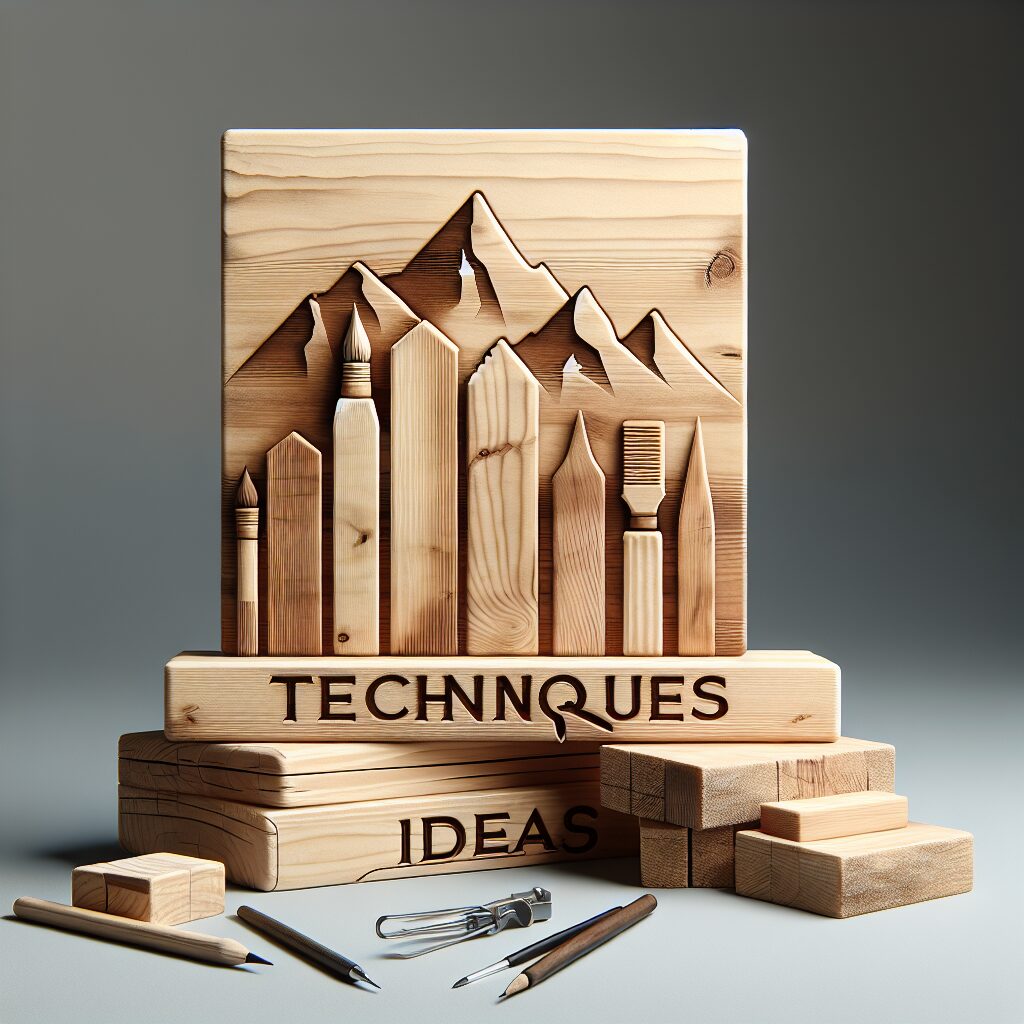Creating a portable workbench can significantly enhance your woodworking projects. Whether you’re a seasoned craftsman or a beginner, having a dedicated workspace that you can easily transport is invaluable. This guide will walk you through the essential steps to build your own portable workbench from scratch, ensuring you have a sturdy and reliable surface for all your woodworking tasks.
Materials and Tools Needed
Before you start building your portable workbench, it’s crucial to gather all the necessary materials and tools. You will need plywood for the top, 2×4 lumber for the frame, screws, and hinges. Additionally, having clamps, a saw, a drill, and a measuring tape on hand will make the process smoother. Choosing the right materials can impact the durability and functionality of your workbench.
For the tabletop, consider using a sheet of plywood that is at least three-quarters of an inch thick. This thickness provides the necessary support for heavy projects. The frame can be constructed from standard 2x4s, which are both affordable and easy to work with. If you need guidance on selecting the right materials, you might find our getting started section helpful.
Step-by-Step Construction Process
Now that you have all the materials ready, it’s time to start building your workbench. Begin by cutting the plywood to your desired dimensions for the tabletop. A common size is 2 feet by 4 feet, but you can adjust this based on your needs. Once the tabletop is cut, you can move on to constructing the frame using the 2×4 lumber.
Assemble the frame by creating a rectangular shape that will support the tabletop. Use screws to secure the corners and ensure everything is square. Adding cross-bracing will enhance the stability of the frame. If you’re interested in more detailed assembly instructions, check out this step-by-step guide for additional insights.
Adding Mobility Features
To make your workbench portable, consider adding wheels to the bottom of the frame. This allows you to easily move the bench around your workspace or transport it to different locations. Make sure to select locking wheels to prevent the bench from rolling when in use. Secure the wheels with screws, and check that they are firmly attached before proceeding.
Finally, attach the plywood top to the frame using hinges. This feature allows you to fold the workbench for easy storage and transportation. When everything is assembled, give your workbench a test to ensure it holds up under pressure. With the right setup, you’ll have a versatile workspace at your fingertips.
| Material | Dimensions | Quantity |
|---|---|---|
| Plywood | 2′ x 4′ | 1 |
| 2×4 Lumber | Various | 4-6 |
| Wheels | 2″ – 4″ | 4 |
Creating a portable workbench is a rewarding project that enhances your woodworking experience. Not only does it provide a stable surface for various tasks, but it also allows for easy transport and storage. In this segment, we will delve into the materials and tools required for building your very own workbench, as well as the assembly process.
Essential Materials and Tools
Before you start building your portable workbench, gather all the necessary materials. You will need plywood or MDF for the work surface, which should be sturdy enough to handle heavy projects. Additionally, consider using 2x4s for the frame, as they offer excellent strength and durability. If you want to enhance the appearance of your workbench, you might choose to finish the wood with a sealant or paint.
In terms of tools, having a circular saw, drill, and sander is essential for cutting and assembling your workbench. A tape measure and square will help ensure accuracy in your measurements and cuts. If you’re new to woodworking, familiarizing yourself with these tools will not only help in this project but also improve your overall skills. It’s also beneficial to have safety gear, such as goggles and gloves, to protect yourself while working.
As you prepare to gather your materials, consider how to organize your workspace effectively. A well-organized area can significantly enhance your efficiency and enjoyment while working. For tips on improving your workspace, consider exploring workspace organization techniques that can streamline your process.
Assembling the Workbench
Once you have all your materials and tools, it’s time to start assembling your workbench. Begin by cutting your plywood or MDF to the desired dimensions for the work surface. Make sure to sand the edges to prevent splinters and ensure a smooth finish. After cutting the top, move on to constructing the frame using 2x4s. You can create a rectangular base that will support the work surface, ensuring that it is sturdy and level.
When assembling the frame, use wood screws to connect the pieces securely. This step is crucial for stability, especially since a portable workbench will need to withstand various tasks. After the frame is assembled, attach the work surface using screws or brackets for added support. Remember to check for levelness as you go along, as this will affect the usability of your workbench.
Finally, once your workbench is assembled, you may want to add features that enhance its functionality. For example, consider incorporating a built-in clamp or tool storage to keep your workspace tidy. If you encounter any issues during assembly, learning about avoiding common mistakes can be a helpful resource. This can help you troubleshoot and refine your technique as you build your workbench.
Building a portable workbench can be a rewarding project that enhances your woodworking experience. Not only does it provide a dedicated space for your projects, but it also allows for easy transport and storage. In this final segment, we’ll wrap up the construction steps and discuss how to maintain your new workbench to ensure it lasts for years.
Completing Your Workbench
Once you have assembled the main structure of your workbench, it’s time to add the finishing touches. Start by sanding all surfaces to remove splinters and rough edges. A smooth surface not only feels better to work on but also helps in preventing any accidents while you work. After sanding, consider applying a protective finish, such as polyurethane or a simple oil, to enhance the durability of the wood.
Next, attach any additional features that you might want, such as a vise or tool holders. These additions can greatly enhance the functionality of your workbench, making it easier to perform various tasks. As you install these features, ensure they are securely fastened and positioned for ease of use. This will help you create a workspace that is tailored to your specific needs.
Maintaining Your Portable Workbench
Regular maintenance is key to keeping your portable workbench in top condition. Start by periodically checking for any loose screws or joints, especially if you move the bench frequently. Tightening these components will help maintain the integrity of the structure and ensure safety while working. Additionally, clean the surface regularly to prevent buildup of dust and debris, which can affect your projects.
Another important aspect of maintenance is protecting your workbench from moisture. If you live in a humid area, consider storing your workbench indoors or using a cover when it’s not in use. This will help prevent warping or damage to the wood over time. If you notice any signs of wear, such as scratches or dents, address them promptly to prolong the life of your workbench.
Finally, if you’re looking to improve your woodworking skills further, incorporating templates in projects can greatly enhance your precision and efficiency. Templates can help in creating consistent cuts and designs, making your workbench even more effective as a tool for your projects.






